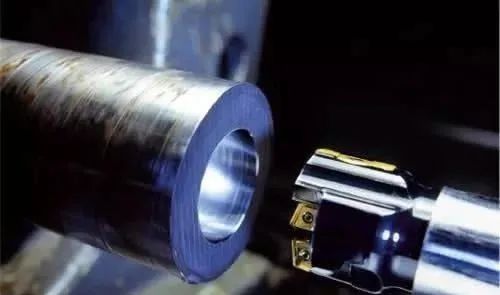
Privacy statement: Your privacy is very important to Us. Our company promises not to disclose your personal information to any external company with out your explicit permission.
![]() July 13, 2023
July 13, 2023
Deep hole processing is divided into six types:
deep hole drilling, deep hole gun drilling, deep hole boring, deep hole drilling, deep hole honing, scraping and rolling machine tool processing, and more! Of course, the cutting oil used is also different.

6. The nozzle of the coolant should face inward towards the hole to facilitate the coolant entering the cutting area.

For smaller diameters, external chip removal is used, as the drill pipe is too small to remove chips. The drill rod with a larger diameter has sufficient space for chip removal, and high-pressure oil is pressed between the hole wall and the drill rod to remove chips and heat from the rod. The drill bit is specially made of hard alloy, which is divided into two parts: the guide and the chip blade. The chip blade is ground into a trapezoidal shape to separate chips. The height and width of the chip groove depend on the material and feed rate of the workpiece to ensure that the chip shape is tight and small, preferably in the shape of a C-shaped or tile.

Generally, a 1:100 emulsion or extreme pressure emulsion is selected; When high machining accuracy and surface quality or toughness materials are required, extreme pressure emulsions or high concentration extreme pressure emulsions are selected. The kinematic viscosity of the cutting oil is usually 10-20cm2/s (40 ℃), and the cutting oil flow rate is 15-18m/s; Select cutting oil with low viscosity when the machining diameter is small; For deep hole machining with high precision, the cutting oil ratio can be 40% extreme pressure sulfide oil+40% kerosene+20% Chlorinated paraffins.
The above is the What cutting oil can be selected for deep hole machining to solve the difficulty of chip removal? we have listed for you. You can submit the following form to obtain more industry information we provide for you.
You can visit our website or contact us, and we will provide the latest consultation and solutions
Send Inquiry
Most Popular
lastest New
Send Inquiry
Send Inquiry

Mr. James
Tel:0086-371-58651986
Fax:
Mobile Phone:+8613783582233
Email:sales@cn-lubricantadditive.com
Address:No.11 Changchun Road, High-Tech Zone, Zhengzhou, Henan
Related Products List
Mobile Site


Privacy statement: Your privacy is very important to Us. Our company promises not to disclose your personal information to any external company with out your explicit permission.

Fill in more information so that we can get in touch with you faster
Privacy statement: Your privacy is very important to Us. Our company promises not to disclose your personal information to any external company with out your explicit permission.